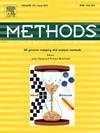CRISPR revolution: Unleashing precision pathogen detection to safeguard public health and food safety
IF 4.3
3区 生物学
Q1 BIOCHEMICAL RESEARCH METHODS
引用次数: 0
Abstract
Foodborne pathogens represent a significant challenge to global food safety, causing widespread illnesses and economic losses. The growing complexity of food supply chains and the emergence of antimicrobial resistance necessitate rapid, sensitive, and portable diagnostic tools. CRISPR technology has emerged as a transformative solution, offering unparalleled precision and adaptability in pathogen detection. This review explores CRISPR’s role in addressing critical gaps in traditional and modern diagnostic methods, emphasizing its advantages in sensitivity, specificity, and scalability. CRISPR-based diagnostics, such as Cas12 and Cas13 systems, enable rapid detection of bacterial and viral pathogens, as well as toxins and chemical hazards, directly in food matrices. Their integration with isothermal amplification techniques and portable biosensors enhances field applicability, making them ideal for decentralized and real-time testing. Additionally, CRISPR’s potential extends beyond food safety, contributing to public health efforts by monitoring antimicrobial resistance and supporting One Health frameworks. Despite these advancements, challenges remain, including issues with performance in complex food matrices, scalability, and regulatory barriers. This review highlights future directions, including AI integration for assay optimization, the development of universal CRISPR platforms, and the adoption of sustainable diagnostic solutions. By tackling these challenges, CRISPR has the potential to redefine global food safety standards and create a more resilient food system. Collaborative research and innovation will be critical to fully unlocking its transformative potential in food safety and public health.
CRISPR革命:开启病原体精准检测,保障公众健康和食品安全
食源性病原体对全球食品安全构成重大挑战,造成广泛的疾病和经济损失。食品供应链的日益复杂和抗菌素耐药性的出现需要快速、敏感和便携式诊断工具。CRISPR技术已经成为一种变革性的解决方案,在病原体检测方面提供了无与伦比的精确度和适应性。这篇综述探讨了CRISPR在解决传统和现代诊断方法的关键空白方面的作用,强调了其在敏感性、特异性和可扩展性方面的优势。基于crispr的诊断,如Cas12和Cas13系统,能够直接在食物基质中快速检测细菌和病毒病原体,以及毒素和化学危害。它们与等温扩增技术和便携式生物传感器的集成增强了现场适用性,使其成为分散和实时测试的理想选择。此外,CRISPR的潜力不仅限于食品安全,还可以通过监测抗菌素耐药性和支持“同一个健康”框架为公共卫生工作做出贡献。尽管取得了这些进步,但挑战依然存在,包括在复杂食品基质中的性能问题、可扩展性和监管障碍。这篇综述强调了未来的发展方向,包括用于分析优化的人工智能集成、通用CRISPR平台的开发以及可持续诊断解决方案的采用。通过应对这些挑战,CRISPR有可能重新定义全球食品安全标准,并创建一个更具弹性的食品系统。协作研究和创新对于充分释放其在食品安全和公共卫生方面的变革潜力至关重要。
本文章由计算机程序翻译,如有差异,请以英文原文为准。
求助全文
约1分钟内获得全文
求助全文
来源期刊

Methods
生物-生化研究方法
CiteScore
9.80
自引率
2.10%
发文量
222
审稿时长
11.3 weeks
期刊介绍:
Methods focuses on rapidly developing techniques in the experimental biological and medical sciences.
Each topical issue, organized by a guest editor who is an expert in the area covered, consists solely of invited quality articles by specialist authors, many of them reviews. Issues are devoted to specific technical approaches with emphasis on clear detailed descriptions of protocols that allow them to be reproduced easily. The background information provided enables researchers to understand the principles underlying the methods; other helpful sections include comparisons of alternative methods giving the advantages and disadvantages of particular methods, guidance on avoiding potential pitfalls, and suggestions for troubleshooting.
 求助内容:
求助内容: 应助结果提醒方式:
应助结果提醒方式:


